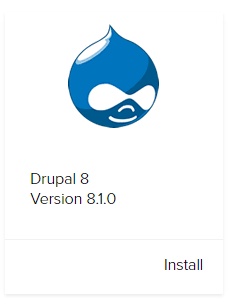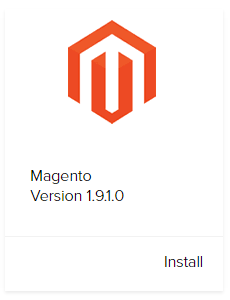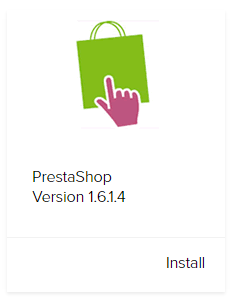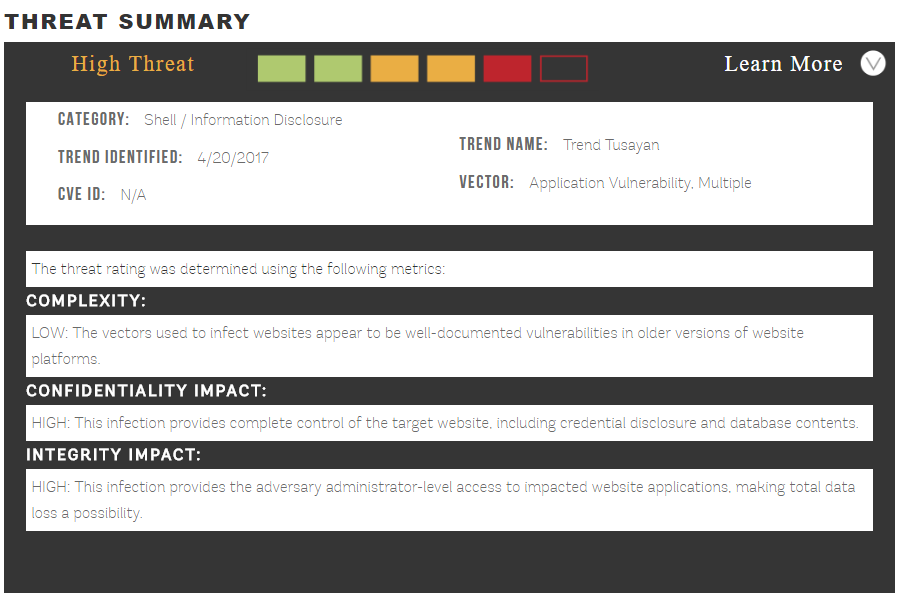When it comes to dealing with a hacked website, the advice you are going to get from a web host isn’t necessarily very good. For example, we have often seen them tell people their websites must have been hacked due to outdated software, without the web host having done anything to determine if that was true (and in some cases despite the website not even using outdated software). In one recent instance we found that one of the brands of the web hosting company Endurance International Group, JustHost, was pointing toward an outdated version of Joomla as the source of hack, while they were offering to install that version on websites despite support for it ending over two years before. Since the installation occurred through another Endurance brand, MOJO Marketplace, it looks like that version probably being offered for install across their other brands as well.
With that that type of thing happening at Endurance, it might not be surprising to see what we recently came across while doing a consultation with someone with a hacked website using one of their other brands, iPage, in which they provided conflicting and bad advice on dealing with a hacked website.
Here was is most of the original email they sent to their customer about a hacked website:
During a routine scan, we detected suspicious contents that suggest your ‘[redacted]’ account has been compromised. We have temporarily suspended your website to protect your website visitors from getting impacted and also preventing the impact on your website reputation as well as our server’s reputation.
We have uploaded a file ‘websitescan.txt’ within the stats directory of your account which contains the full list of infected files. We need you to take one of two actions suggested below:
Please follow the steps given below to remove the infected contents on your own:
1. Open the ‘websitescan.txt’ file through your FileManager (OR use ‘FTP’ software like FileZilla).
2. Clean or remove each of the listed files.
3. You can also upload a clean copy of web files from your local backup.Alternatively, we encourage you to contact our preferred partner, SiteLock. In addition to long-term solutions like their Fix and Prevent products, which offer daily scans and removal of malware, SiteLock also provides an emergency service, SiteLock 911. You can call our dedicated SiteLock support representatives using the Toll Free number (United States and Canada customers only): (855) 378 6200. International: +1 415 390-2500. To learn more about SiteLock, please go to: https://www.ipage.com/product/sitelock
So in that email they recommend simply cleaning/removing or replacing the files they identified.
When they refer to SiteLock as their preferred partner what they really mean they are getting paid a lot of money to push their services (SiteLock’s owners also happen to run Endurance International Group).
In a follow up email they had these recommendations:
Please remove the malicious contents or replace the infected files with a clean copy of web files from your local backup.
Our best recommendation is to completely remove all the files from the account and restore the contents from a known clean backup. An alternative would be going through a company such as SiteLock to clean and secure all scripts. If this isn’t done and the malicious files that are found through scanning are simply removed, the vulnerability will still exist and you will encounter the files again and again.
Those two paragraphs seem to conflict with each other as the second one states that if “the malicious files that are found through scanning are simply removed, the vulnerability will still exist and you will encounter the files again and again”, but the first paragraph and the first email suggest doing just that.
The larger problem with this is that whether you were to “completely remove all the files from the account and restore the contents from a known clean backup” or remove the indicated files that isn’t going to resolve the vulnerability. The malicious code in files on the website had to get there somehow, so there must be something that allowed that and you would need to fix that. To be sure you had fixed it, instead of just guessing that you had, you would need to figure out how the website was hacked in the first place. Nowhere in the emails do they suggest doing those things and those are things their “preferred partner” SiteLock usually doesn’t do based on everything we have seen with them.













